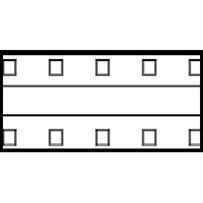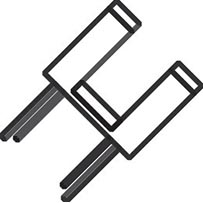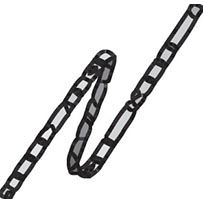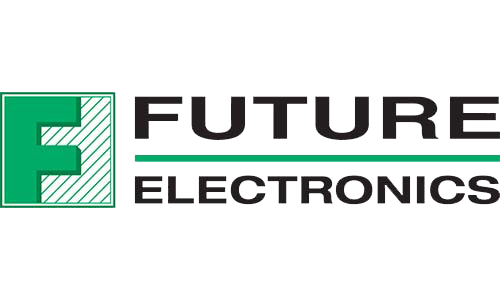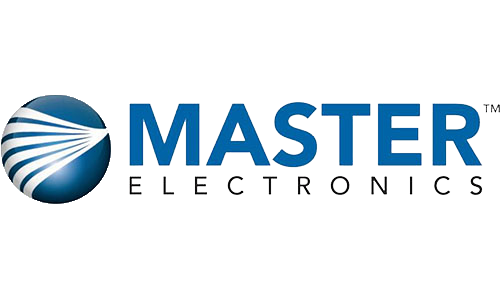How LEDs Changed Architectural Lighting and Design
Introduction
Architecture exists at the intersection between the artistic and the functional. Buildings must be both beautiful and practical. Function goes beyond just materials and floor plans, however. Lighting has a profound impact on how people experience the buildings where they live, study, work, and play. Architects and lighting designers come up with concepts to optimize that experience in every project, but too often, they’re prevented from bringing their concepts to reality by the inherent limitations of conventional light sources. With the development of LED light sources like LED light strips, LED printed circuit board assemblies (PCBA) and direct AC LED modules, that situation has changed. LED lighting has given architects and lighting designers an entirely new toolkit for realizing their aesthetic visions, from dramatic accent lighting to sleek luminaires to systems that effortlessly change color schemes to suit time of day or seasonal celebrations. LED lighting also delivers practical benefits to building owners like improved energy efficiency and reduced maintenance. Here, we take a look at how LED lighting is driving new trends in the architectural lighting space.
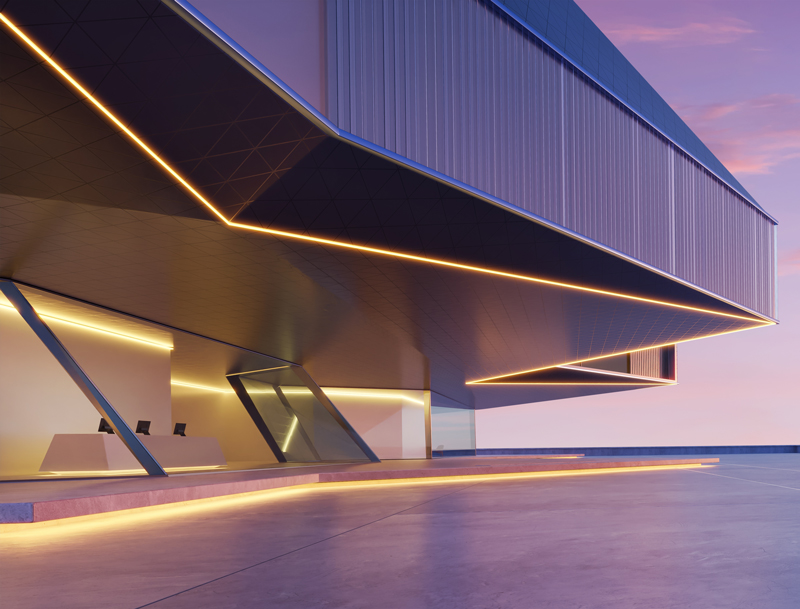
The Role of Lighting in Architecture
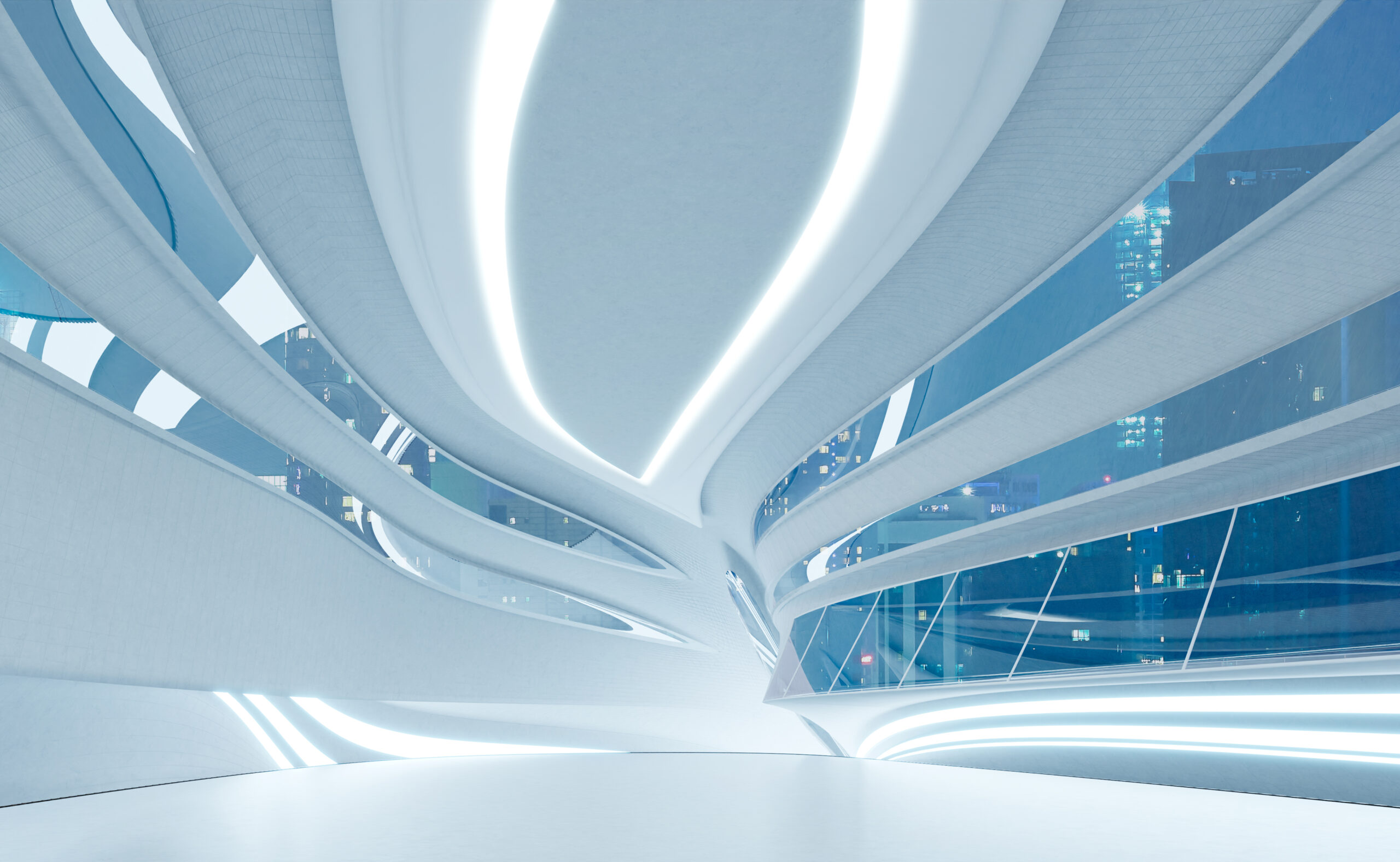
Lighting performs many tasks in architecture beyond ambient lighting. It plays a crucial role in the overall aesthetic of a structure – think color on the edges of skyscrapers, a light show on a bridge, or LED light strips highlighting the curves of a nightclub ceiling.
Here are a few of the ways lighting is used in architecture:
- Cove/soffit lighting – lighting hidden behind a barrier to provide indirect illumination
- Accent lighting – lighting to draw attention to an internal or external feature
- Wash lighting – diffuse illumination directed along a surface to change its appearance
- Floor illumination – lighting mounted beneath the floor or under toe kicks to create drama
- Task lighting – focused lighting designed to illuminate spaces for specific activities
The greater the degrees of freedom offered by a lighting technology like LEDs, the more effectively it can support these roles.
Architectural Lighting Needs
Architectural lighting projects involve a number of stakeholders with different objectives and requirements. Architects and lighting designers want the freedom to develop lighting that supports both the aesthetic and the purpose of the building. Builders want a system that’s fast and easy to install. Owners want lighting that minimizes both maintenance and total cost of ownership (TCO), while serving the people who interact with the structure, whether that’s inside or across town.
The latter point has many layers. Architectural lighting can be used to affect the way the structure appears to viewers. It can change how people move through the interior, subtly guiding them through doorways and highlighting stairs and handrails. It can even affect how people feel and function in the space.
Light can have a significant effect on human health. It can alter our circadian rhythms, for example. Blue light suppresses production of melatonin, a hormone that regulates sleep. In many cases, that can be beneficial. Blue light has been shown to increase alertness and elevate mood, which is ideal for lighting workspaces or high energy venues like nightclubs. Some studies suggest that it can even improve memory and mental clarity. Warmer tones allow melatonin to rebound, making them better fits for evening hours or spaces intended for relaxation (think break rooms).
Brightness also impacts the experience of occupants. Task lighting, in particular, should be carefully calibrated. Too dim, and it causes eyestrain. Too bright or too directed and it can cause glare that leads to fatigue.
Conventional light sources provide only limited options for addressing these issues. LED lighting solutions offer many more degrees of freedom.
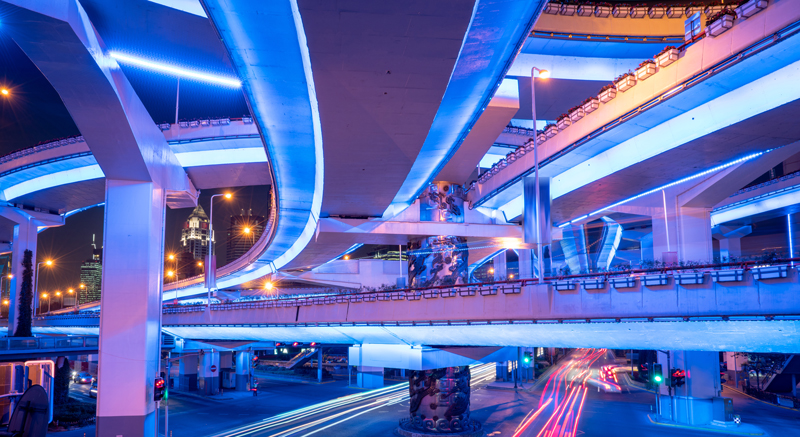
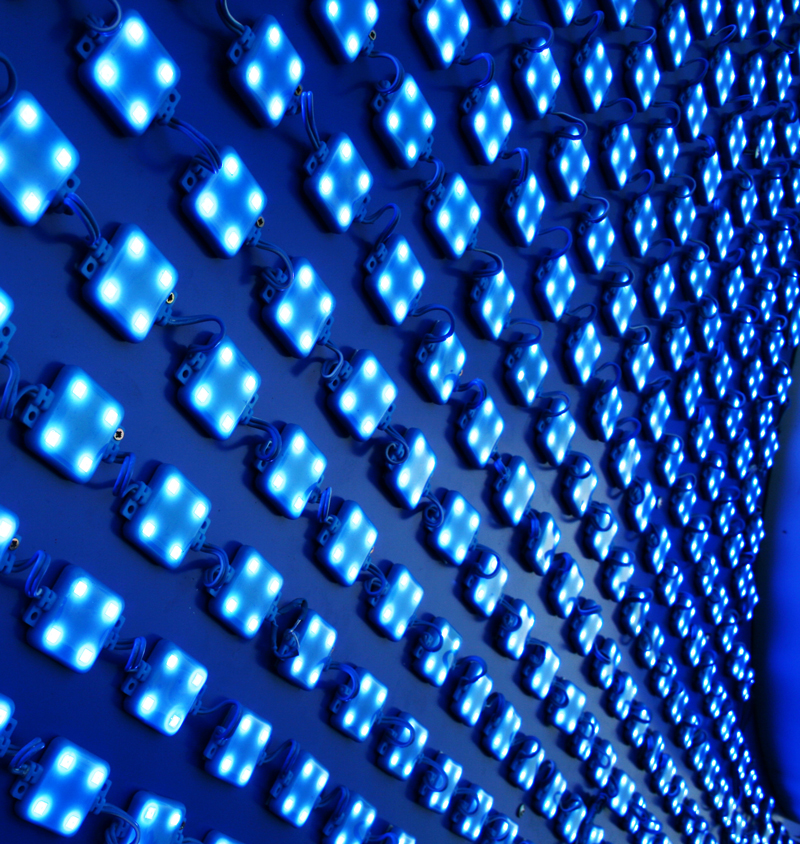
Why LEDs?
For a century, architects and builders have been limited to a few conventional lighting technologies: incandescent, fluorescent, and neon. These technologies all have a number of drawbacks for architectural lighting applications. Where they present drawbacks, LEDs provide benefits:
Long lifetimes: Conventional light sources fail in just a few months or a few years, which leads to higher maintenance costs. LEDs have lifetimes of up to 100,000 hours, significantly reducing TCO. Long lifetime is beneficial in locations where replacing light sources may disrupt normal activities or even require special equipment for hard-to-access fixtures. As an added plus, LEDs don’t fail catastrophically, they simply dim gradually over time, allowing replacement to be planned well in advance.
High efficiency: LEDs have extremely high wall plug efficiencies, particularly in comparison to conventional sources. This reduction in energy consumption substantially lowers TCO.
Small size: LEDs range in size from millimeters to microns in diameter. The small size and the alternative form factors support a vast variety of designs, from innovative luminaires to sophisticated accent lighting.
Broad color range: Converting white light output from fluorescent and incandescent sources requires filters, which basically represent lost light and wasted energy. Neon lights are inherently colored but also monochromatic. In both cases changing color can be complex, time-consuming, and expensive.
RGB LEDs can be electronically controlled to generate colored output spanning the entire color gamut – and change color both instantaneously and continuously. Because LEDs are current-driven devices, they’re also electronically dimmable. The combination lets lighting designers bring any color display they can imagine to life.
High color rendering index (CRI): Good-quality white-light LEDs have CRIs in the high 90s, enabling them to faithfully render the color of the objects and surfaces they illuminate. This is particularly valuable in applications like food service and retail.
Programmability: LED drivers can be software controlled, allowing them to support a variety of programs, from complex dynamic color displays to small shifts in the color temperature of office lighting over the course of a day.
Native DC loads: LEDs are solid-state devices that run off DC power. With the increasing interest in renewable energy, a growing number of buildings generate their own DC power. The traditional model is to convert the DC output to AC, route it through the building to a receptacle, then reconvert it to DC at the light fixture. The problem is that each conversion represents power loss. As a result, architects, builders, and property owners are increasingly complementing their green building initiatives by installing DC microgrids for power transfer within buildings. Native DC LED light sources are the single biggest device type driving the adoption.
With this collection of advantages, LED light sources have become increasingly appealing for architectural lighting applications.
LED Building Blocks
LEDs are available in a variety of packages that create a vast array of opportunities for architects, lighting designers, and luminaire manufacturers.
LED Light Strips, Rope Lights and COB Light Strips
Consist of flexible circuit boards populated by surface-mount LEDs and other components, which could include drivers (see Figure 1). The LEDs can be single color, various color temperatures of white (CCT), RGBW, and addressable RGB with a built-in IC. Power consumption is low, which makes them very energy efficient. They are durable, appealing and easy to install.
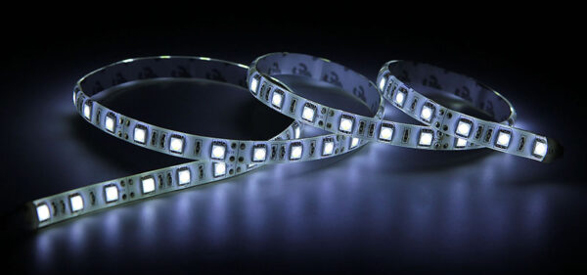
Figure 1: LED light strips, consist of long, thin, flexible circuit boards populated with surface mount LEDs and driver circuitry.
Flexible Rope Lights
Flexible rope lights are composed of silicone tubes encasing LED light strips (see Figure 2). The LEDs can be single color, white light with various correlated color temperatures (CCTs), RGBW and addressable RGB with built-in IC. The tubes may be clear, showing the individual lights, or they may include diffusers to create a continuous, uniform effect. Rope lights are very flexible and compact enough to use in small spaces. Single and dual-sided rope lights make it easy to install the rope lights around tight angles.
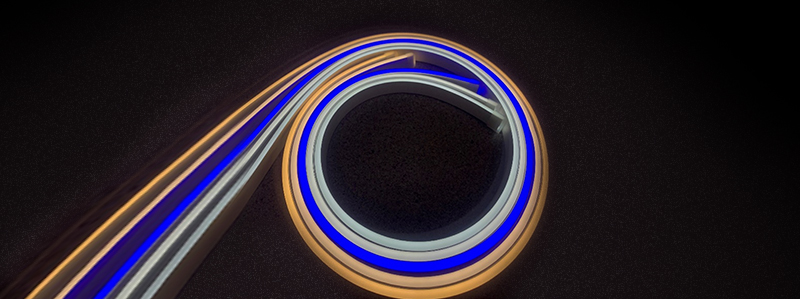
Figure 2: Flexible rope lights consist of LED light strips encased in silicone tubes that can be either transparent or diffuse.
Addressable RGB Light Strips
Addressable RGB light strips give architects and lighting professionals great degrees of design freedom. Because each LED on a strip has a built-in IC, the brightness and color can be controlled individually (see Figure 3). These lights can be programmed to provide sophisticated, dynamic effects and are used in a wide variety of ways.
IP ratings of IP20, IP65 and IP68 make these light strips and rope lights ideal for any indoor and outdoor application. They are UL listed.
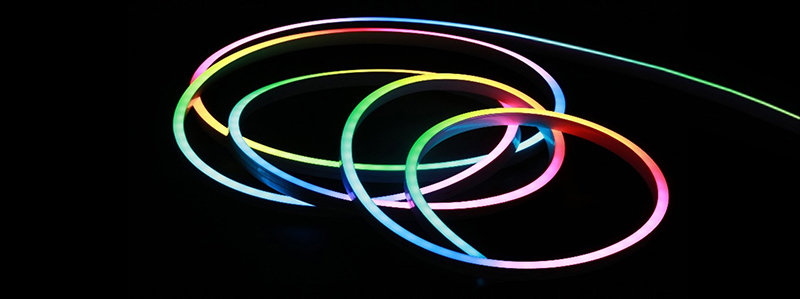
Figure 3: Independently addressable RGB LEDs with ICs enable lighting designers and architects to enable lighting designers and architects to create sophisticated, dynamic color effects.
Chip on Board (COB) LED Strips
Chip on Board (COB) LED Strips are unpackaged LEDs that are mounted directly on the light strip. The light strips are constructed with epoxy material that makes them super flexible. They can be used to create very high luminous flux density without hot spots. COB LED light strips are dimmable between a warm white and a cool white. The high uniform flux density, combined with flexibility, makes COB LEDs strips ideal for narrow and sinuous designs. Applications range from general lighting and backlighting to decoration and even indication. They are also UL listed.
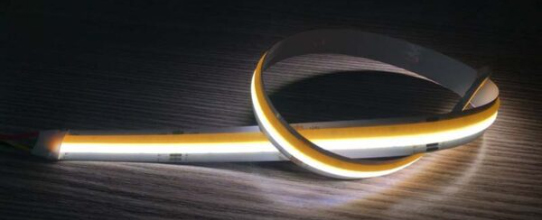
Figure 4: COB light strips
LED PCB Modules
To bring innovative concepts to reality, luminaire designers need a variety of form factors. To get those concepts to market quickly, they need lighting modules that simplify engineering and integration. A variety of LED PCB modules have been created to serve this customer base.
- These modules carry all the advantages of basic LEDs, including compact size, reduced power consumption, extended lifespan, and high efficiency.
LED DC Modules
In LED DC modules, surface-mount LEDs are mounted directly to a PCB, along with a built-in control circuit (see Figure 5). The PCB can be a rigid board or a flexible board, depending on the design. Aluminum-based PCB boards excel in transferring heat away from the board to the outside. Architects and designers can use PCB LED modules for interior and exterior projects. Standard products are available but custom solutions are available on request to support innovative designs.
Like LED light strips, these modules can be populated with single-color LEDs, white-light LEDs with different CCTs, RGBW devices, and independently addressable RGB LEDs with built-in ICs.
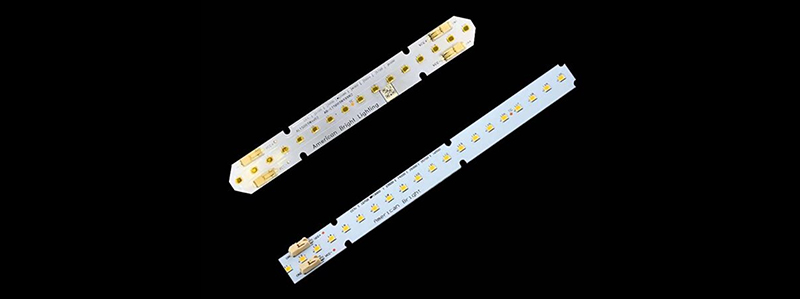
Figure 5: These DC LED modules provide luminaire designers with a variety of options to realize sleek and novel designs.
Direct AC Modules
LEDs are DC loads, but the majority of buildings still operate off of AC wiring. That means LED fixtures typically need an AC/DC power adapter to operate. Adapters are generally external, which adds bulk to the luminaire and complexity for the luminaire designers. This directly conflicts with the benefits brought by, particularly for luminaire manufacturers working on innovative designs. Direct AC modules provide a solution.
Direct AC modules are LED modules with integrated power adapters (see Figure 6). They provide a simpler and more reliable solution for general lighting applications, while delivering higher efficiencies in a compact package. These modules offer uniform output and full software control in an all solid state dimmable pacakage. The ultrasmall form factors make it possible for luminaire designers to build whatever they can dream up. Having the integrated adapter also simplifies the task for the manufacturers, from design through assembly.

Figure 6: AC LED modules like the American Bright Ingeni-AC family of LED light sources feature integrated power adapters for streamlined designs and faster product development cycles. They’re available in linear, circular, and square form factors; custom versions are available upon request.
New Trends in Architectural Lighting
The architectural lighting community has begun enthusiastically adopting LED light sources. In addition to the practical advantages, the programmability and chromatic flexibility enable architects and lighting designers to create almost anything they can imagine.
- Curved accent lighting: The flexibility of LED light strips makes it possible to accentuate even complex and irregular nonlinear shapes to make them pop. The technique is used as frequently outdoors as it is inside, courtesy of IP68 ratings.
- Lighted handrails: LED light strips add drama to handrails while enhancing safety by increasing visibility.
- Dynamic color walls: Wash lighting is just the start. The broad color palettes and programmability of modern LED light sources can be used to realize dynamic displays that can be used to entertain and also guide occupants through the space. The treatment can also be used on the ground, such as the surfaces of pedestrian bridges.
- Ceiling and wall lighting: designers are moving beyond traditional ceiling and wall fixtures to embed light strips directly into the surfaces. The long, thin stripes provide visual interest, as well as illumination and, potentially, guidance.
- Floor lighting: Lighting no longer needs to be at the ceiling. Light strips are increasingly being used along baseboards, under toe kicks, and even within the floor itself. When installed under the treads of stairs, light strips perform multiple tasks: adding drama, increasing safety, and helping to direct movement through the space.
- New luminaire form factors: LEDs support form factors that were previously unheard of, such as wall lights that are shallow enough to fit into sheet rock or slender linear and curved fixtures. Direct AC modules further support this trend.
- Color changing task lights: Electronic devices aren’t the only things using color to improve human health and performance. Offices can take advantage of what we know about color shift to maximize employee comfort and performance throughout the day. In addition, COB LED lights can be used to reduce glare and prevent fatigue.
Conclusion
LED light sources have given architectural lighting community new capabilities to serve both the aesthetic and the practical sides of the discipline. Architects and lighting designers can take advantage of new form factors and chromatic opportunities to complement both the aesthetic and functional aspects of their jobs. Builders have a choice of design devices designed for ease of use. Owners reduce costs and increase reliability while adding drama, functionality, or both to the buildings they own and operate.
American Bright offers a comprehensive portfolio of light strips, rope lights, and LED modules for both lighting professionals and luminaire designers. We field products that streamline the design and engineering process so that customers can focus on the aesthetics, taking the performance for granted. And perhaps most important, our expert staff has decades of aggregate experience helping customers bring their visions to reality.
Find out how LEDs can enhance your next project. Contact us at sales@americanbrightled.com.




